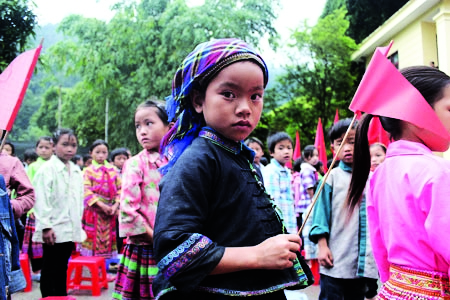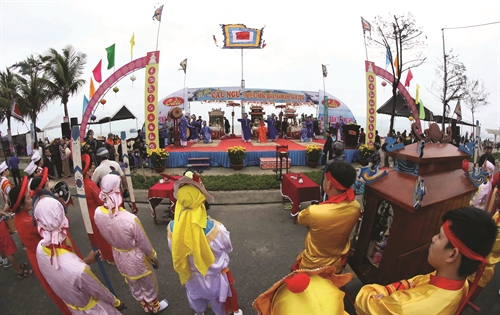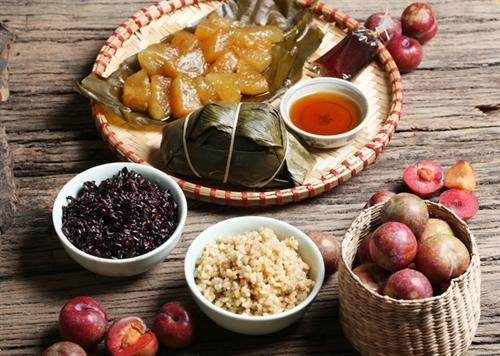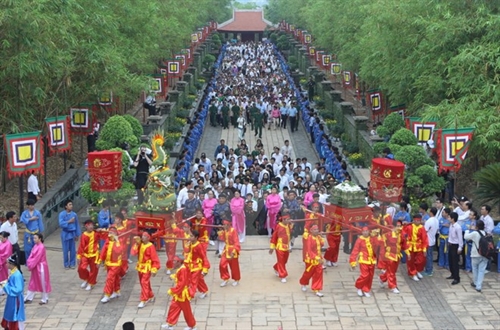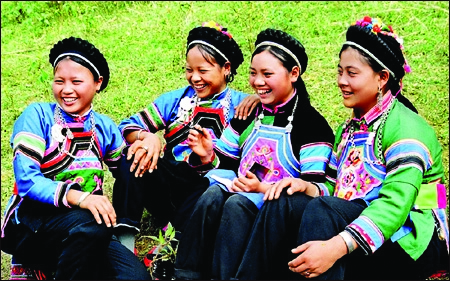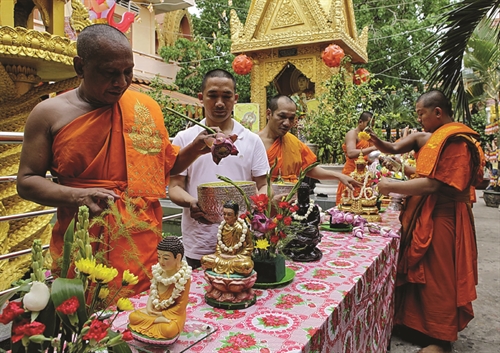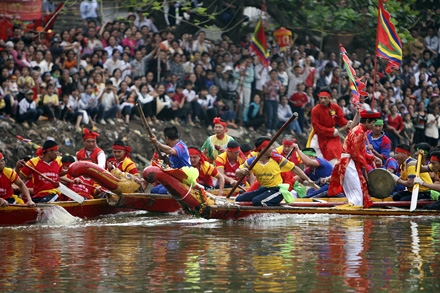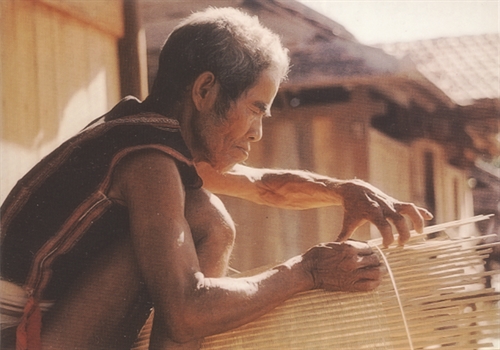>>Spending the night in a Thai home
>>Hair washing ceremony of the Thai
>>New rice ceremony of the Thai
>>Matrilocality challenges Thai grooms
>>Rules and conventions of the Thai ethnic minority
>>Invitation to a dinner with the Thai
>>Rules and conventions of the Thai ethnic minority
Nguyen Tham Thu Ha
Ethnology Institute
Cremation is an ancient practice of the black Thai in the northwestern region of Vietnam who believe a person will enjoy a happy life in muong troi (heaven) if he or she is bathed in fire after death.
The way to heaven for the black Thai is Tat Huoi Lo falls in Thach Luong commune of Yen Bai province where the spirit of any person is supposed to pass over after his death to reach muong troi. At the foot of the falls is a ground of rocks which looks like thousands of lying buffalos. This ground, called dong quai ha (forest of dead buffalos), is believed to be formed from the spirits of buffalos - an indispensable sacrifice in every Thai funeral.
When a black Thai dies, his family will invite a shaman to take care of all rituals, ensuring that the spirit of the deceased can reach muong troi.
Before being laid in a coffin, the deceased is bathed with scented water and dressed in his best clothes with some silver coins in his pocket. The coffin is placed at home for two days for mourners to bid a final farewell before the dead is brought to the village cemetery for cremation.
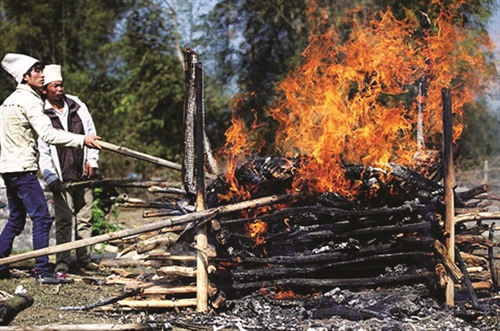 |
| The cremation ritual of the Thai __Photo: Internet |
The cremation ritual is usually held at midnight, starting with a formality to sacrifice a buffalo which is supposed to accompany the dead to the afterlife as his asset. After the shaman recites prayers for the dead to receive his asset, the buffalo is slaughtered to make a meal for all villagers.
After the sacrifice ritual, the shaman prays to lead the dead’s spirit to heaven, waving up a big torch while praying. Relatives of the deceased then put the coffin onto a pyre of firewood built in seven layers, or nine layers if the dead is a woman. The shaman then burns the firewood with the torch, followed by relatives of the dead who do this act one after another to make way for the dead to heaven. Every family member uses a winnowing basket to fan the fire till all the firewood burns out, leaving ashes on the ground. Mourners then disperse except some family members who will stay awake throughout the night to guard the remains. When going back, mourners must follow the way they went when escorting the dead to the cemetery. They are supposed not to take a shortcut, which is believed to make the soul of the dead get lost and unable to return to his home.
The next morning, family members pour alcohol onto the ashes to sort out the bones which appear white amid the ashes. The bones are then put in a cloth bag and placed in a terra-cotta urn together with some silver coins or necklaces and bracelets. The urn, which is buried right at the place of cremation, must contain a roll of silk thread. This item is believed to bridge the worlds of the living and the dead through which the dead’s spirit can go home to protect his descendants.
The black Thai build a grave for the dead person exactly like the home of the living in the belief that the dead will lead a life just the same as the living. The dead’s home, made of bamboo with a stilt-house structure, accommodates all basic utilities such as cushion, pillow, bowl, chopstick, jar, pot, cup and glass. Under the stilt-house is put some firewood for the dead to use. Inside the house is placed a tray of offerings, including rice, vegetables, rice alcohol, incense and a living rooster which will be released after the offering ceremony ends.
Next to the house is planted cay cao which is a bamboo tree around 5-7 meters high with two layers. On the upper layer of cay cao is hung a shirt of the dead at one side and his or her spouse’s at the other side, symbolizing the love of the couple who are believed to reunite in the afterlife after the other passes away. On the lower layer is a red and black long shirt of the dead made by his or her daughter-in-law to show her respect to the deceased. This shirt is not worn by the parent-in-law until he or she dies.
On the top of cay cao is placed a wooden horse covered with a colorful cloth parasol. The horse, accompanied by a spout containing grass and paddy rice, is for the spirit to ride to heaven. The horse for a man has two wings while that for a woman has four wings.
At the foot of cay cao is hung colorful cloth pennons indicating the age of the dead. For a woman aged 50 or older, the pennons are hung in two layers. For a man, the pennons are hung together with a white cloth flag tied to a separate bamboo stick.
Looking at cay cao, one may know the dead is a man or woman, young or old and rich or poor. The black Thai believe if cay cao falls within one month after the funeral, it is a good omen telling that the spirit of the deceased has reached muong troi.
After the funeral, family members offer rice to the dead until the third day when a ceremony called hong is held to escort the dead’s spirit home for worship on the family altar. One year later, the family holds xen song, a ceremony to end the mourning period after which the dead is venerably worshiped like other ancestors of the family without having his death anniversary held annually as practiced by many other ethnic minority groups.
Cremation used to be a custom which must be strictly observed in the black Thai community in the northwestern region. Disobeying this custom would be strongly condemned. Today, this custom is only upheld by some black Thai clans in Muong Lo valley of Yen Bai province. But most black Thai people still keep the practice of putting the coffin over a fire as a symbol of cremation before burying it.-
